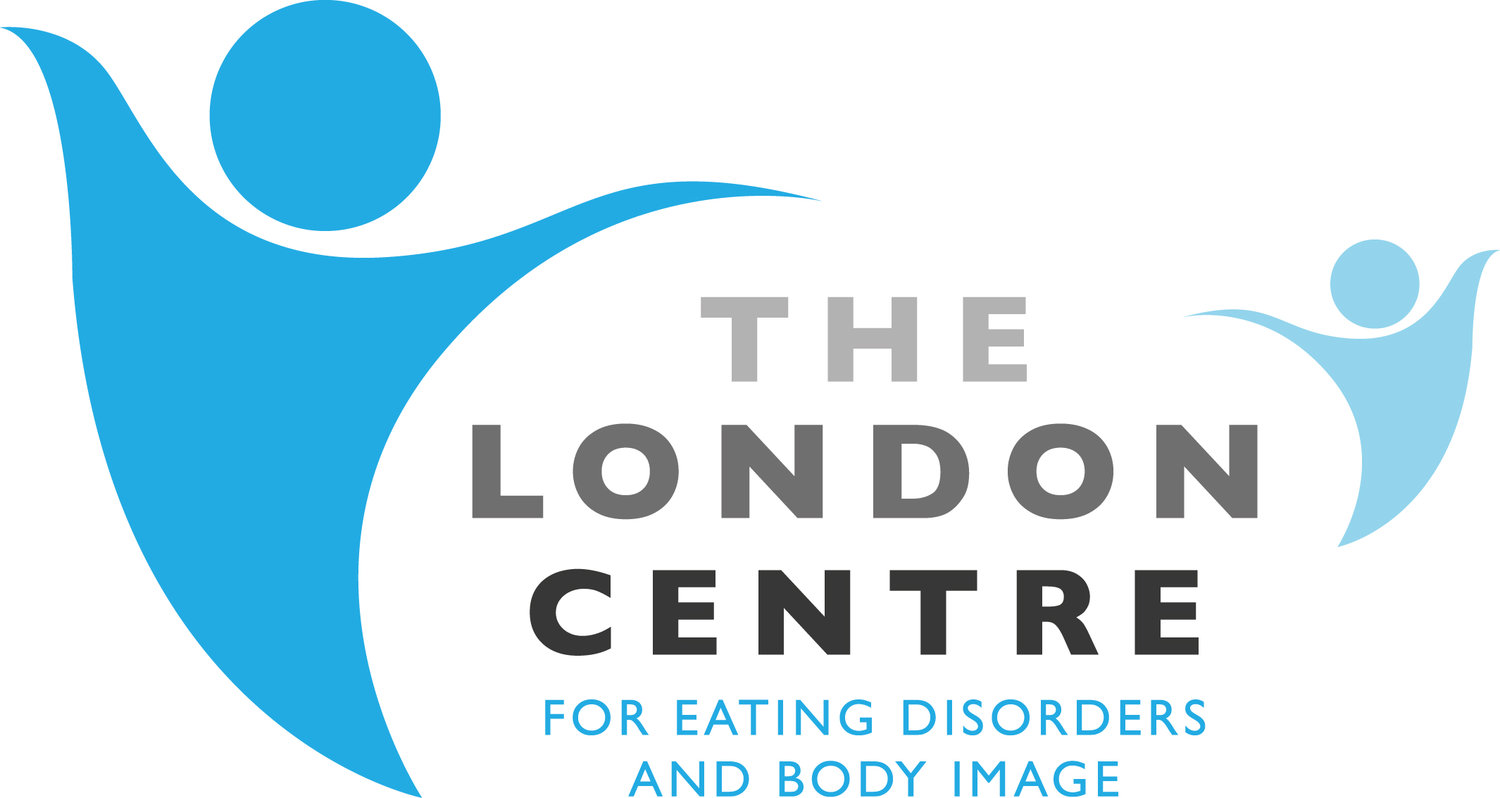Is Body Dysmorphia an Eating Disorder?
Body dysmorphia and eating disorders can often be confused as being the same, however, they are two distinct conditions. While both can be deeply distressing and have a significant impact on the quality of life, they have different underlying causes and symptoms. In this blog, we'll explore the relationship between these two conditions, shedding light on their similarities, the challenges faced by those affected and the importance of specialised treatment.
What is Body Dysmorphia?
Body Dysmorphic Disorder (BDD) is a mental health condition where an individual obsesses over perceived flaws in their appearance. These perceived flaws are often not noticeable to others, but they cause significant distress and impact daily life. Body dysmorphia can consume a person's thoughts and make it difficult for them to live their day-to-day lives.
Symptoms and Impact of Body Dysmorphia
Living with body dysmorphia often includes numerous challenges that affect daily functioning. Individuals with BDD may constantly check mirrors, seek reassurance from others, or avoid social situations due to fears around their appearance.
Symptoms of Body Dysmorphia:
Though each individual is unique, the below can be symptoms of BDD:
Obsessive focus on appearance flaws
Individuals might spend hours each day thinking about their perceived flaws.Excessive grooming or skin picking
They might engage in repetitive behaviours such as combing, skin picking, or excessive makeup application.Comparisons with others
Continuous comparison of their looks with others can lead to significant distress.Avoidance of mirrors
Some might avoid mirrors entirely to prevent distressing thoughts.
Impact on Daily Life:
Social Withdrawal: People with BDD might avoid social events or public places out of fear that others will notice, and make judgement on, their perceived flaws.
Impact on Self-Esteem: Constant negative thoughts about appearance can severely impact a person's self-esteem. They may feel worthless or ashamed, which can lead to anxiety, depression, or other mental health difficulties.
Occupational Challenges: Focusing on appearance can make it hard to concentrate at work or school, leading to poor performance or absenteeism.
Understanding and recognising the symptoms of body dysmorphia is crucial for seeking appropriate body dysmorphia treatment. It is essential to recognise the signs and reach out to professionals who can help, as the impact on self-esteem and daily functioning can be profound.
Defining Eating Disorders
Eating disorders are serious mental health conditions that affect how individuals think about food and their body. They are characterised by unusual eating habits that negatively impact health, emotions, and the ability to function in important areas of life.
Key Features of Eating Disorders
Eating disorders come in various forms, each with distinct characteristics, that impact an individual’s physical and psychological health. Understanding these characteristics can help in recognising when an eating disorder may be present and seeking appropriate treatment and therapy.
Some examples of eating disorders include:
Anorexia Nervosa
Anorexia nervosa involves an intense fear of gaining weight and a distorted body image, leading to extreme restriction of food intake. People suffering from anorexia may see themselves as overweight even when they are dangerously underweight.
Psychological Consequences:
Anxiety
Depression
Obsessive-compulsive disorder (OCD) or extreme rigidity in behaviours
Physical Consequences:
Severe weight loss
Malnutrition
Cardiac issues
Bulimia Nervosa
Bulimia nervosa is characterised by episodes of binge eating followed by compensatory behaviours such as vomiting, excessive exercise, or the use of laxatives.
Psychological Consequences:
Low self-esteem
Social anxiety
Negative Body image
Physical Consequences:
Electrolyte imbalances
Erosion of tooth enamel
Gastrointestinal problems
Binge Eating Disorder (BED)
People with binge eating disorder consume large amounts of food without subsequent purging behaviours. This leads to feelings of guilt, shame, and distress.
Psychological Consequences:
Self-esteem issues
Depression
Social isolation
Physical Consequences:
Gastrointestinal problems
High cholesterol or blood pressure
Cardiac issues
Other Specified Feeding or Eating Disorders (OSFED)
This category is used for eating disorders that do not meet the criteria for anorexia, bulimia, or BED but still cause significant distress or impairment.
Psychological Consequences:
Anxiety
Social isolation
Low self esteem
Physical Consequences:
Varying health issues depending on eating behaviours
Understanding these key features of eating disorders can aid in seeking proper treatment.
The Relationship Between BDD and Eating Disorders
Understanding the connection between BDD and eating disorders is vital. Both disorders often stem from altered perceptions of one's body and can lead to serious mental and physical health issues. Here are some factors that could contribute to these disorders.
Contributing Factors
Societal and Media Pressure
Society often propagates a narrow definition of beauty, emphasising thinness, muscularity, or specific body proportions as the ideal. This standard is perpetuated by the media and advertising, which frequently showcases images of what people ‘should’ look like., creating unrealistic and unattainable body ideals.
Personal History
Personal history plays a crucial role in the development of body dysmorphia and eating disorders. Experiences from childhood, including bullying or parental attitudes towards body image, can have lasting effects. Understanding these contributing factors can help in finding effective body dysmorphia treatment options and encourage those affected to seek therapy.
Overlapping Symptoms of Body Dysmorphia and Eating Disorders
Body dysmorphia and eating disorders can seem like very different issues, but they share many of the same symptoms. They are both concerned with how a person sees their body and the behaviours they engage in as a result. Here we explore some of the common symptoms that overlap between these conditions.
Obsessive Thoughts and Behaviours
People with both body dysmorphia and eating disorders often have obsessive thoughts about their body. They may spend a lot of time thinking about their appearance in a way that negatively affects their daily life. In severe cases up to 90% of a person's thoughts may be focussed on the appearance or behaviours to alter or disguise their appearance.
Anxiety and Depression
Anxiety and depression are commonly experienced by those dealing with body dysmorphia and eating disorders. These emotions can stem from the same source – a negative perception of one's body. Whilst anxiety and or depression can be a trigger to developing an eating disorder, or in some cases body dysmorphia, they can also be a consequence of both. Social Anxiety: Avoiding social situations because of fear of being judged on their appearance.
Compulsive Behaviours
Individuals with these conditions often engage in compulsive behaviours to cope with their distressing thoughts, reduce anxiety and alter their appearance. This can include compensatory behaviours such as purging or excessive exercise, or safety behaviours (behaviours designed to minimise anxiety) such as mirror checking or body camouflaging.
Social Withdrawal
People suffering from both eating disorders and body dysmorphia will often withdraw from their social circles. This can be due to low mood, or because of a fear of judgement from others. This isolation can further lower mood and increase a person's anxiety.
By understanding these overlapping symptoms, it's easy to see why some people may be confused about the difference between these two diagnoses. Whilst it is possible to experience both conditions concurrently, a diagnosis of an eating disorder will usually be given before or prior to a diagnosis of an eating disorder, and will usually, though not always, be the primary focus of treatment prior to addressing the body dysmorphia. Of course, with the right support and a tailored treatment plan, it's possible to find a path to health and well-being.
Treatment Approaches for Body Dysmorphia and Eating Disorders
Specialist treatment for body dysmorphia and eating disorders is crucial for achieving a good outcome and improving mental health and overall well-being. Effective treatment approaches can profoundly impact recovery and quality of life.
Therapy and Support
Therapy plays a significant role in the recovery process for those who are challenged with body dysmorphia and eating disorders. Different types of therapies are available, each targeting various aspects of these conditions.
Cognitive Behavioural Therapy (CBT): Often considered the gold standard for treating body dysmorphic disorder (BDD), CBT helps individuals identify and challenge distorted thoughts about their bodies. It includes strategies to reduce the compulsive behaviours often associated with BDD and OCD.
Other talking therapies: CBT is not the only therapy known to be effective in treating body dysmorphia or eating disorders. Talking therapies of which there are many different types, can help address underlying issues such as anxiety disorders, depression, and self-esteem issues.
Medication: For some, medications, particularly serotonin reuptake inhibitors (SRIs), are necessary. These can help manage severe symptoms of BDD, especially when accompanied by anxiety or depression.
Support Groups and Community Resources: Support groups provide a safe space for individuals to share their experiences and receive encouragement from others facing similar challenges.
Self-care techniques: Encouraging self-care practices such as mindfulness, relaxation exercises, and positive self-talk may complement professional treatment.
By combining these therapeutic approaches, individuals can gradually rebuild their self-esteem and develop the tools they need to manage their symptoms effectively. It's a journey of self-discovery and healing, and seeking the right professional support can make a significant difference.
Understanding the distinction between body dysmorphia and eating disorders is crucial. Both conditions can profoundly impact mental health and self-esteem. However, they require different treatment approaches. For individuals affected by either condition, seeking professional help is the first step towards recovery.
The London Centre offers specialised treatment for body dysmorphic disorder, including cognitive behavioural therapy (CBT) and other support services. Our comprehensive approach addresses related issues such as anxiety, depression, and social anxiety, enhancing overall wellbeing.
Start the conversation today by visiting The London Centre and take the first step towards a healthier future.

